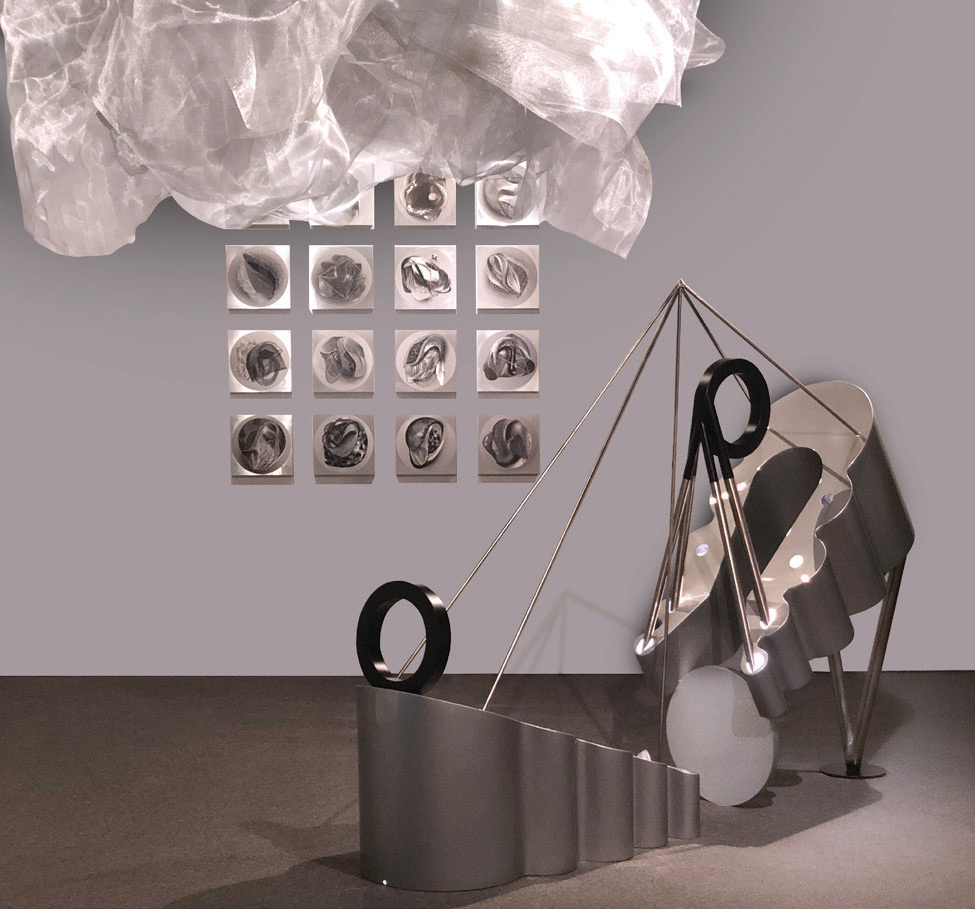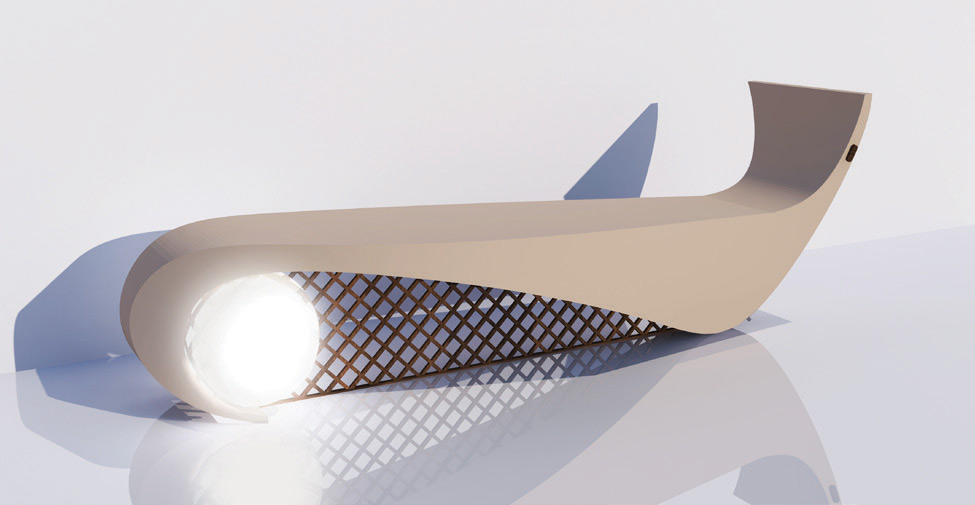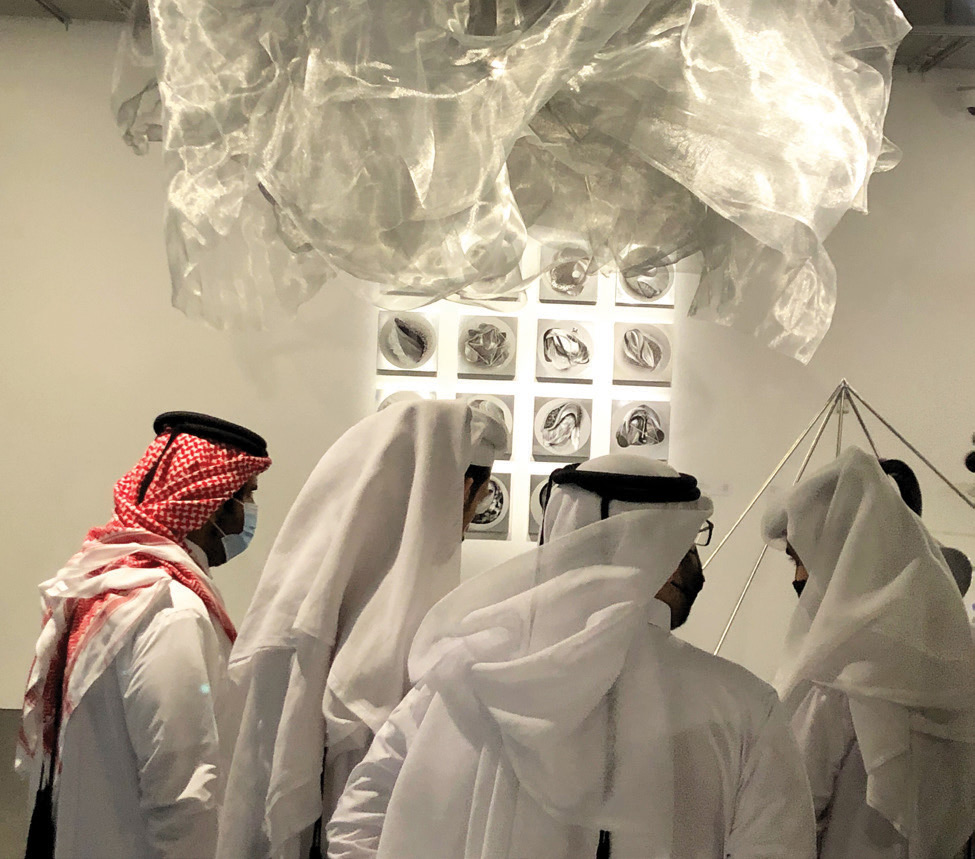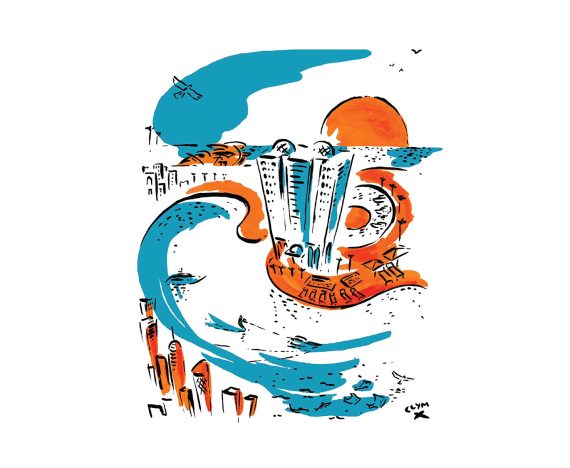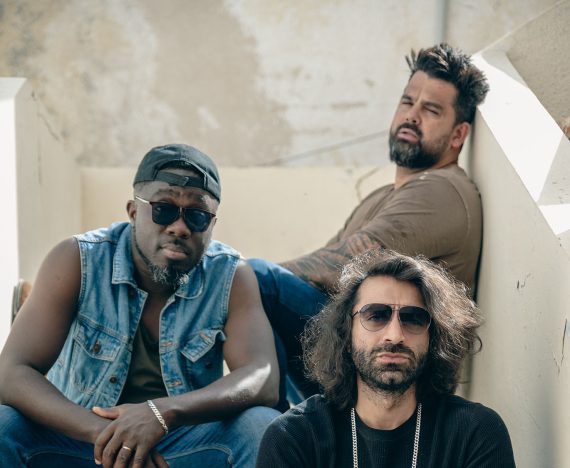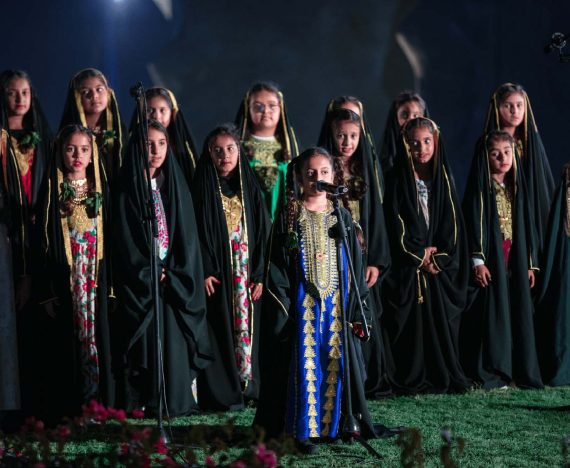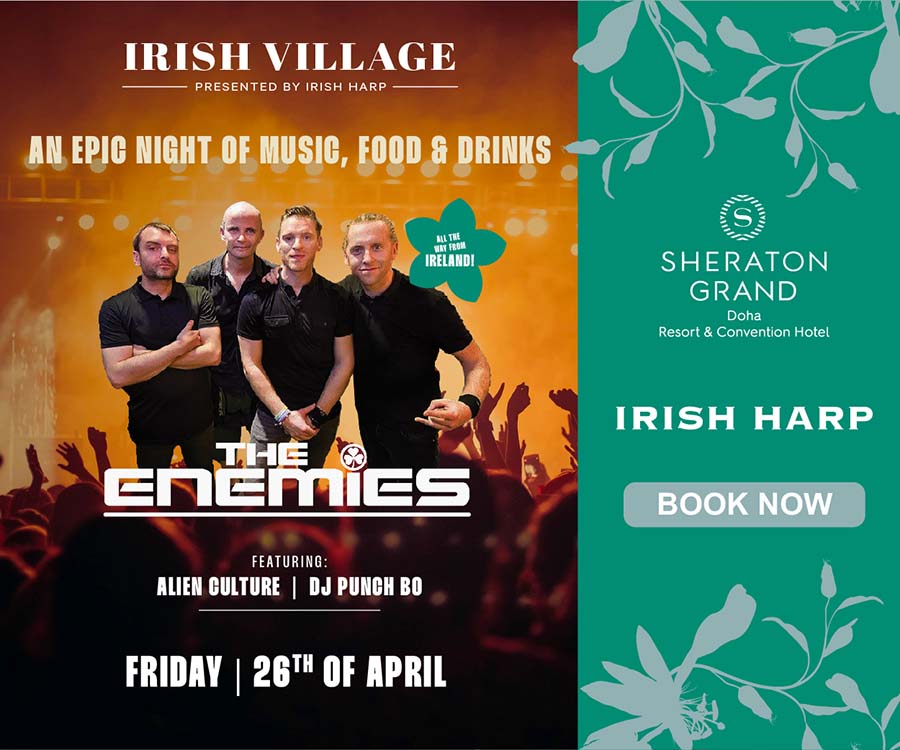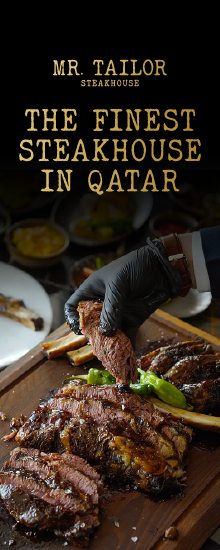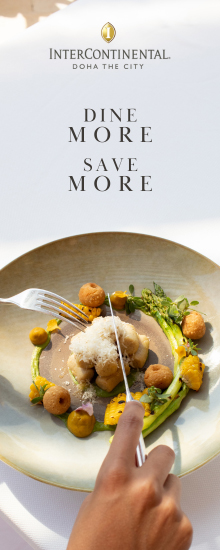A MAN FOR ALL SEASONS
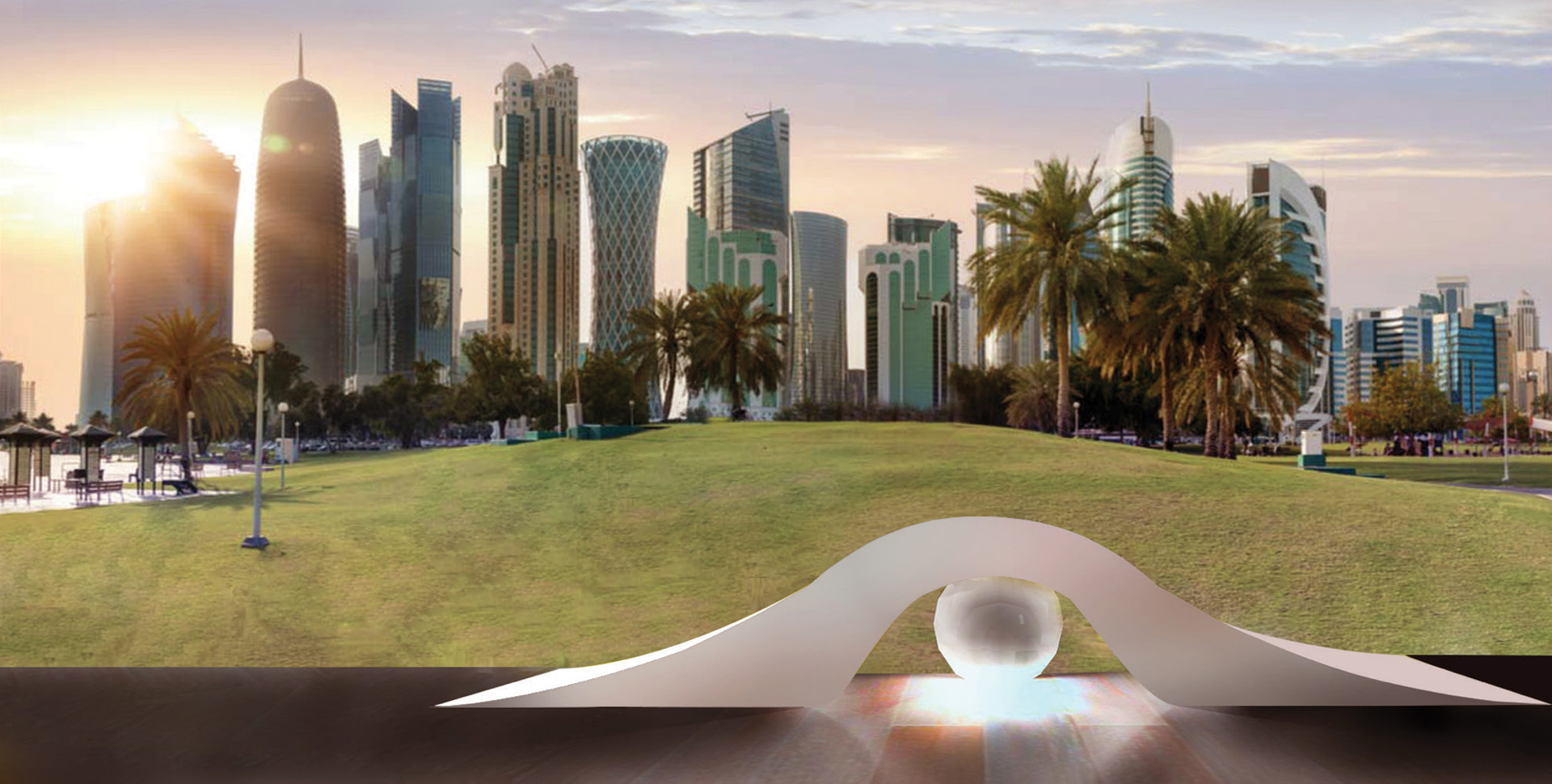
Born in Venezuela and raised in Lebanon, as Haytham Sharrouf interplays between different genres and mediums of art, he speaks to FACT about his journey and what and who inspires his creative process.
Haytham Sharrouf is a man for all seasons, architect, designer and visual artist, he interplays between different genres instantly shifting his focus from something known to exploring uncharted territories and comes up with visually challenging and contemporary art pieces. You cannot categorise his work into one particular type — his pieces include oil paintings, furniture design, digital art and well-worked impressionistic models and centre pieces.
Wearing a blush pink P-Cap, Sharrouf works quickly, applying maroon to large areas of the canvas, then counterbalances it with strokes of grey and shades of blue, pausing just occasionally to take a look from afar at how the shades are coming together. For him, it’s never about finishing one specific stroke, but about the whole picture.
His curiosity about human autonomy is reflected in his pieces and takes the viewer on an intervening layer of silence. The dripping paint, webbings and patterns catch your eye instantly, but how those eyes travel, interpret and see, is pretty much individual and that’s the beauty of Haytham’s art.
We discovered what inspires him, his contemporary style and expression, and the narrative he intends putting forward with his art.
What inspires your art and who’s your favourite artist?
My inspiration relies on my state of mind. I believe we, as humans, pass-through different phases in our lives, and I love to crown each phase through an art practice. It could be painting, designing or performing. But the word connection has something so special for me, because interests and inspiration have to deal with what we are connected with at certain stages in our lives.
I really love Marina Abramović, a Serbian conceptual and performance artist, philanthropist, writer and filmmaker’s work. She explores body art, endurance and feminist art. She is one of the artists that inspires me through her silence and feelings and especially when silence becomes very loud.
How do you think architecture, interior design and visual arts come together?
Architecture has been always a major view if you want to study about history and culture. And interior design reflects our individuality as humans in a certain space. Coming to visual art, it is something very personal and it’s a narrative diary for an artist. So, in my case, I have the luxury of translating my ideas and my narrative into different mediums and disciplines.
My academic studies in interior architecture and graphic design deepened my sight of how I perceive the city and what it offers me. I’m interested in surveying the affect of architecture on humans, and how to implement architectural concepts, lines and forms on the human association and reciprocal relations.
As a user of these spaces, I’m interested in becoming actively involved in a process of redesigning and transforming the context of landmark buildings into models that go beyond the traditional boundaries of painting, architecture, graphic art and installation.
What’s something that is essential to your creative process?
Being spiritual and calm is essential to my creative process. I have worked many times on pieces where I didn’t feel much connected with my inner self and it gave me a completely different outcome than when I feel I’m connected with a high sense of spirituality.
Since you’re an architect and an interior designer, how do you think light plays a role in setting up the place and art installations?
Light and Shadow: Isolation and Interaction.
Humans need light and interaction to stay sane. Without light, we lose our sense of time and without interaction, we become consumed with loneliness and boredom. With this sensory deprivation comes unimaginable spiritual psychological affects, via my art installations.
How has your work evolved over time, do you see a significant change in how you portray elements and concepts?
Well, to be honest, joining Artist In Residence in Qatar at Doha Fire Station, made me feel more responsible for my choices and the concepts I want to work on, because I am at a stage where my projects and concepts are being studied at several universities and are being used for different design applications. So, I believe I’m evolving with time and I believe I’m creating a great archive for all my achievements, ones that are publicly announced and ones that I’m waiting for the right time to announce.
What advice would you give to young artists who want to pursue painting as a full-time profession?
Allow yourself to be different, because the creative process needs an extraordinary creative life style and way of thinking, and never try to copy other artists. Always think of creating your own line because your line is part of your identity and narrative. ✤









